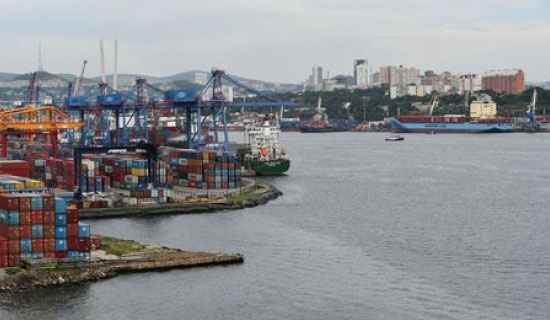COPENHAGEN - A Maersk vessel loaded with Russian fish and South Korean electronics will next week become the first container ship to navigate an Arctic sea route that Russia hopes will become a new shipping highway.
The Arctic voyage by the 3,600 20-foot container capacity Venta Maersk is the latest step in the expansion of the so-called Northern Sea Route which is becoming more accessible to ships as climate change reduces the amount of sea ice.
The brand new Venta Maersk, one of the world’s largest ice-class vessels, will also collect scientific data, said Maersk, underlining that the voyage is a one-off trial for now.
The decision by Maersk, the world’s biggest container shipping group, to test out the route is a positive sign for Russia, which hopes this could become a mini Suez Canal, cutting sea transport times from Asia to Europe.
“A well-respected company like Maersk sending a container ship through the Arctic, definitely signals there’s something there,” Malte Humpert, a senior fellow at U.S.-based think-tank Arctic Institute, said.
The Northern Sea Route runs from Murmansk near Russia’s border with Norway to the Bering Strait near Alaska. Ships sailing it require a permit from Russian authorities.
While the route is significantly shorter than going via the Suez Canal, it has not yet proven to be commercially viable for container shippers.
“Currently, we do not see the Northern Sea Route as an alternative to our usual routes,” a spokeswoman for Maersk said.
“Today, the passage is only feasible for around three months a year which may change with time,” the spokeswoman said.
Sea ice around the North Pole reaches its biggest area at the end of the winter in March, and thaws to an annual minimum in September. The ice has shrunk in recent decades in a trend scientists have linked to man-made climate change. In the past, more expensive ice-classed vessels, higher transit fees, unpredictable ice coverage, high insurance rates, a lack of search and rescue teams, and hefty fees for Russian ice-breaker escorts have put off many international shipping firms. (Reuters)
Home » World » Maersk Sends First Container Ship through Arctic Route
Maersk Sends First Container Ship through Arctic Route

